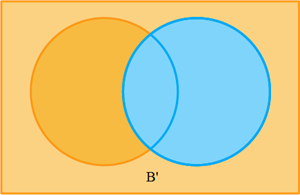
PUMPA - SMART LEARNING
எங்கள் ஆசிரியர்களுடன் 1-ஆன்-1 ஆலோசனை நேரத்தைப் பெறுங்கள். டாப்பர் ஆவதற்கு நாங்கள் பயிற்சி அளிப்போம்
Book Free DemoDifference of two sets:
The difference of sets \(A\) and \(B\) is the set of elements which belong to \(A\) but not to \(B\). Symbolically, we write \(A – B\) and read as "\(A\) minus \(B\)".
Symbolically we write \(A-B=\{x:x\in A\ \mathrm{and}\ x\notin B\}\) and \(B-A=\{x:x\notin A\ \mathrm{and}\ x\in B\}\)
Let \(A=\{2,\ 4,\ 6,\ 8\}\), \(B=\{6,\ 8,\ 10,\ 12\}\). Find \(A-B\) and \(B-A\).
In the Venn diagram below \(A\) and \(B\) are represented.
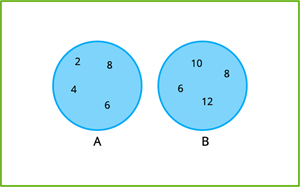
In the Venn diagram below, the area in the yellow colour represents \(A - B\).
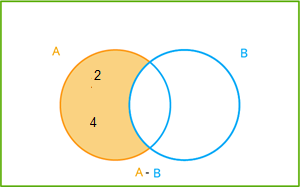
In the Venn diagram below, the area in the yellow colour represents \(B - A\).
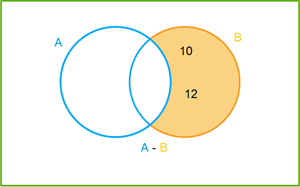
Symmetric Difference of Sets:
The symmetric difference of two sets \(A\) and \(B\) is the set of union elements which belong to \(A\) but not to \(B\), and symbolically we write \(A – B\) and read as "\(A\) minus \(B\)". If it belong to \(B\) but not to \(A\), symbolically we write \(B – A\) and read as "\(B\) minus \(A\)". Symbolically we write \((A–B)∪(B–A)\). It is denoted by \(A Δ B\).
Symbolically we write \(A\Delta B = \{x:x\in A-B\ \mathrm{or}\ x\in B-A\}\).
In the Venn diagram below \(A\) and \(B\) are represented.

In the Venn diagram below, the area in the blue colour represents \(A Δ B\).
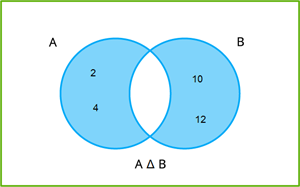
Complement of a set:
Let \(U\) be the universal set, and \(A\) be a subset of \(U\). Then the complement of \(A\) is the set of all elements of \(U\) which are not the elements of \(A\). Symbolically, we write \(A′\) to denote the complement of \(A\) with respect to \(U\).
Symbolically we write \(A^\prime = \{x: x\in U\ \mathrm{and}\ x\notin A\}\). Obviously \(A^\prime=U-A\).
Note: The complement of a set \(A\) can be looked upon, alternatively, as the difference between a universal set \(U\) and the set \(A\).
In the Venn diagram below, the area in the blue colour represents \(A'\).
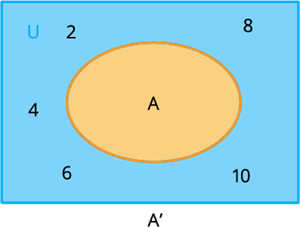
If \(A\) and \(B\) are two sets, then the complement of \(A\) and \(B\) are \(A' = U - A\) and \(B' = U - B\)
In the Venn diagram below, the area in the blue colour represents \(A'\).
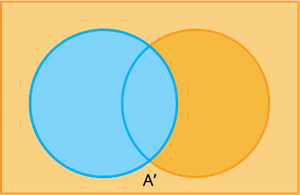
In the Venn diagram below, the area in the blue colour represents \(B'\).
